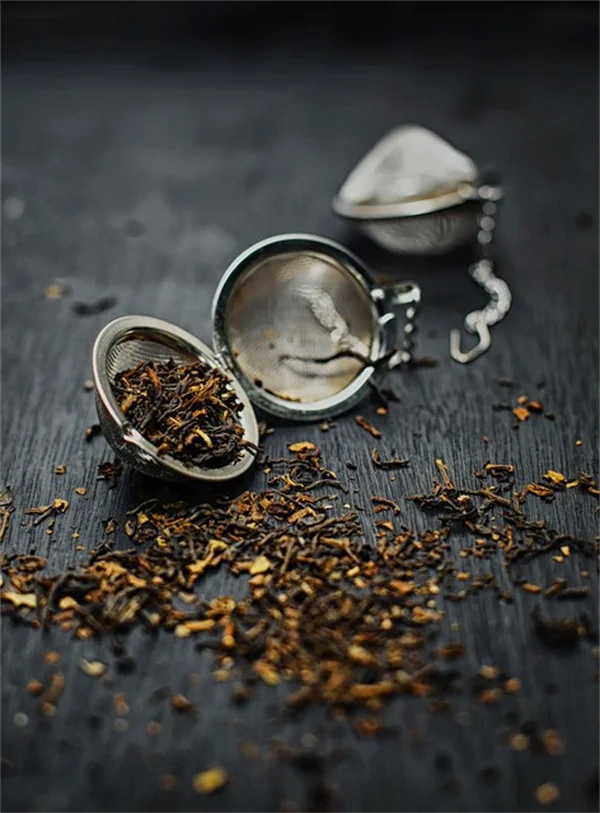Can you really lower heart disease risk by reducing sodium intake? The answer is absolutely yes! Research shows that 89% of heart disease patients consume double the recommended sodium limit, putting unnecessary strain on their cardiovascular system. Here's the deal: while the American Heart Association suggests keeping sodium under 2,300mg daily, the sweet spot for optimal heart health is actually 1,500mg or less.I've worked with countless patients who've transformed their heart health simply by getting smarter about salt. The truth is, most of us don't even realize how much sodium we're eating - it hides in everything from bread to cereal to restaurant meals. But don't worry, you're about to discover simple, practical strategies that make low-sodium living surprisingly delicious and doable.
E.g. :Aspartame and Cancer Risk: What the WHO's Warning Really Means
Why Your Heart Hates Salt (And How to Break Up With It)
Let me guess - you probably think you're doing okay with salt, right? Well, here's the shocking truth: 89% of people with heart disease eat double the recommended sodium limit without even realizing it! That's like pouring an entire salt shaker directly into your bloodstream every single day.
The Sodium-Heart Connection: What You Need to Know
Picture your heart as a hardworking pump. Now imagine forcing it to work overtime while someone slowly clogs the pipes - that's essentially what excess sodium does to your cardiovascular system. Every extra grain of salt makes your heart's job harder, increasing blood pressure and causing fluid retention that can lead to swollen legs and breathing difficulties.
But here's the good news: you have way more control than you think. While you can't change your genetics, your fork is one of the most powerful tools for heart health. Let's look at how much sodium we're really talking about:
| Recommended Limit | Average Consumption | Heart Health Goal |
| 2,300 mg (general) | 3,096 mg (heart patients) | 1,500 mg (ideal) |
Why We're All Saltaholics (And How to Quit)
Ever wonder why restaurant food tastes so darn good? Here's their secret: they could probably melt a snowplow's worth of salt into every dish! The average restaurant meal contains more sodium than you should eat all day - and that's before you touch the bread basket.
But here's the million-dollar question: If we know salt is bad, why can't we stop? Simple - it's sneaky! Sodium hides in places you'd never expect, like your morning cereal ("But it's sweet!"), sandwich bread ("It's just bread!"), and even some medications. Food manufacturers have turned us into unwitting salt addicts.
Your Action Plan for a Low-Sodium Life
 Photos provided by pixabay
Photos provided by pixabay
Supermarket Survival Guide
Next time you grocery shop, play this game: pretend the center aisles are lava. Stick to the perimeter where the fresh stuff lives. When you do venture into packaged food territory, become a label detective:
- Look for "5% DV or less" in the sodium column
- Watch for sneaky sodium aliases like monosodium glutamate
- Remember: "low sodium" means ≤140mg per serving
Flavor Hacks That Don't Come From a Shaker
Who says low-sodium food has to taste like cardboard? Try these flavor boosters that'll make you forget about salt:
• Smash some garlic and roast it - instant umami bomb!
• Keep lemons handy - that bright acidity wakes up any dish
• Experiment with spice blends (my current obsession: smoked paprika + cumin)
Here's another question you might be asking: Can I ever eat out again? Absolutely! Just use these pro moves:
1. Ask for sauces/dressings on the side (you'll use way less)
2. Request "no added salt" when ordering
3. Skip the soup (it's usually a salt bomb in disguise)
Tools and Tricks to Stay on Track
Tech That Has Your Back
Your smartphone can be your sodium-fighting sidekick! Try these apps:
- MyFitnessPal (tracks sodium intake)
- Fooducate (grades food healthiness)
- Sodium Defender (scans barcodes for salt content)
And here's my favorite kitchen hack: buy some measuring spoons and actually measure your salt for a week. You'll be shocked how quickly those "little pinches" add up!
 Photos provided by pixabay
Photos provided by pixabay
Supermarket Survival Guide
Listen, we all need help sometimes. A registered dietitian can create a personalized plan that doesn't make you feel like you're eating twigs and sadness. Many insurance plans even cover nutrition counseling - it's worth checking!
Remember: small changes create big results. Start by cutting just one salty habit (goodbye, pickle jar snacks!) and build from there. Your heart will thank you with every strong, steady beat.
The Delicious Truth About Low-Sodium Living
Here's the best part: as you reduce sodium, your taste buds actually change. Foods you used to think were bland will start tasting vibrant and flavorful. It's like getting a whole new set of taste receptors!
And don't just take my word for it - try this simple experiment:
1. Go low-sodium for just 2 weeks
2. Then eat something from your old salty favorites
3. Prepare to be grossed out by how overpowering it tastes!
That moment when your formerly beloved chips taste like someone dumped the Dead Sea on them? That's your body telling you it's ready for healthier choices. And trust me, your future self will high-five you for making the change.
The Hidden Sodium in Your Favorite Comfort Foods
Breakfast Bombshells
You know that cozy Sunday brunch feeling? Well, your pancakes might be plotting against your heart health. A single restaurant pancake breakfast can contain over 2,000mg of sodium - that's more than the entire daily recommendation in one meal!
Let me break it down for you: the batter has salt, the bacon is cured with sodium, the syrup often contains sodium benzoate as a preservative, and even that innocent-looking butter pat is salted. It's like a sodium conspiracy against your arteries. But here's a fun alternative - try making banana-oat pancakes with cinnamon and nutmeg. You'll get all the comfort without the salt overload.
Fast Food Traps
Ever wonder why you crave burgers when you're stressed? The fast food industry has sodium down to a science. A typical fast food combo meal contains about 4,500mg of sodium - that's two days' worth in one sitting!
Here's something wild - the bun alone often has more sodium than the patty. And those crispy fries? They're basically salt sticks with potato flavoring. Next time the drive-thru calls your name, try this trick: order the smallest size, skip the cheese and sauces, and balance it out with a big salad later. Your taste buds will adjust faster than you think.
Global Perspectives on Salt Consumption
 Photos provided by pixabay
Photos provided by pixabay
Supermarket Survival Guide
While Americans average about 3,400mg of sodium daily, some countries show us better ways. In Finland, a national salt reduction program cut average intake by 40% over 30 years - and saw a 75% drop in stroke deaths!
Japanese cuisine offers great lessons too. They use umami-rich ingredients like mushrooms and seaweed to boost flavor without salt. And in Mediterranean countries, fresh herbs and citrus do the heavy lifting. You don't need to move abroad to borrow these tricks - just raid the international aisle at your grocery store.
The Science of Taste Adaptation
Here's a mind-blowing fact: your taste buds regenerate every 10 days. That means you can completely reset your salt tolerance in just 2-3 weeks! I tried this myself last year - after 21 days of mindful eating, a sip of canned soup tasted like ocean water.
The process works like this: as you reduce sodium, your taste receptors become more sensitive. Suddenly, natural flavors in vegetables and grains start popping. It's like upgrading from standard definition to 4K for your mouth. Why not challenge yourself to a 21-day reset? You might discover flavors you never noticed before.
Creative Low-Sodium Swaps for Common Cravings
Salty Snack Solutions
When that 3pm chip craving hits, try this instead: slice cucumbers super thin, sprinkle with lime juice and chili powder, then bake until crisp. You get crunch, spice, and satisfaction for about 95% less sodium than regular chips.
Another game-changer? Air-popped popcorn with nutritional yeast. It gives you that savory umami kick with just 5mg sodium per cup versus 150mg in microwave popcorn. I keep a big jar of this magic dust in my pantry - it makes everything taste cheesier without the salt.
Restaurant Hacks That Actually Work
Here's my favorite trick when eating Italian: ask for pasta "al dente" with olive oil, garlic, and pepper flakes on the side. You control the seasoning, avoiding the salt bomb of pre-made sauces. Most chefs are happy to accommodate - they just need to know you're serious about your health.
At Asian restaurants, request steamed rice instead of fried, and ask for sauces on the side. You'll be shocked how little you actually need to enjoy the flavors. Last week I did this at my favorite Thai place and saved about 1,200mg of sodium on one meal!
The Emotional Side of Salt Reduction
Breaking the Comfort Food Connection
We all have those foods we turn to when life gets tough. For me, it used to be a giant bowl of ramen - until I realized the broth alone had 1,800mg sodium. Now I make a quick miso soup with low-sodium broth and extra veggies. It gives the same cozy feeling without the next-day puffiness.
The key is understanding why we reach for salty foods when stressed. Sodium actually triggers dopamine release - our brain's "feel good" chemical. But we can get similar rewards from other comforting rituals: a warm herbal tea, a short walk, or even just taking deep breaths before eating.
Dealing With Social Pressure
"Come on, one bite won't kill you!" - sound familiar? Navigating food pushers can be tricky. I've found success with humor ("My doctor says my heart will stage a protest!") or simply focusing on what I can eat rather than what I can't.
Remember: you're not being difficult, you're being proactive about your health. Most people will respect your choices if you frame them positively. And for those who don't? Well, their opinion matters about as much as the salt content in a salt shaker.
E.g. :Heart-healthy diet: 8 steps to prevent heart disease - Mayo Clinic
FAQs
Q: How does sodium actually damage your heart?
A: Here's what most people don't realize about sodium and heart health: it's not just about blood pressure. When you consume too much salt, your body retains extra fluid, which makes your heart work overtime to pump this increased volume. Over time, this can lead to enlarged heart muscle, artery damage, and increased risk of stroke. Think of it like forcing your heart to run a marathon every single day without rest. The good news? Studies show that reducing sodium intake by just 1,000mg daily can significantly lower cardiovascular risks within weeks.
Q: What are the biggest hidden sources of sodium in our diets?
A: You'll be shocked where sodium hides! While we all know to watch out for chips and pretzels, the real sodium bombs are in foods you'd never suspect. Bread, cereal, canned vegetables, deli meats, and even some medications can pack more salt than you'd eat in an entire meal. Restaurant food is the worst offender - a single entrée often contains a full day's worth of sodium. My pro tip? Become a label-reading ninja and watch for sneaky terms like monosodium glutamate or disodium phosphate that indicate hidden salt.
Q: How can I make low-sodium food actually taste good?
A: This is where most people give up, but trust me - flavor doesn't come just from salt! I teach my patients to use citrus zest, fresh herbs, garlic, and spice blends to create bold flavors without the sodium. Try roasting vegetables with smoked paprika or adding a splash of balsamic vinegar to soups. The secret? Your taste buds adjust within 2-3 weeks. Foods you once thought were bland will start tasting vibrant, while salty snacks will suddenly taste overpowering. It's like getting a whole new set of taste receptors!
Q: Is it possible to eat out while maintaining a low-sodium diet?
A: Absolutely! I recommend these restaurant survival strategies: First, always ask for dressings and sauces on the side - you'll automatically use less. Second, request "no added salt" when ordering - most chefs will accommodate this. Third, avoid soups (which are basically salt broth) and bread baskets. Pro tip? Ethnic restaurants like Thai or Indian often have more naturally flavorful (not just salty) options if you ask them to go easy on the soy sauce or prepared spices.
Q: What's the easiest way to start reducing sodium today?
A: Here's my simple 3-step starter plan anyone can do: 1) Swap one processed food (like canned soup) for a fresh alternative. 2) Measure your salt when cooking for one week - you'll be shocked how much you use. 3) Download a sodium-tracking app like MyFitnessPal to become aware of your intake. Remember, small changes create big results over time. Even cutting just 1/4 teaspoon of salt daily removes about 600mg of sodium from your diet - that's a huge win for your heart!





